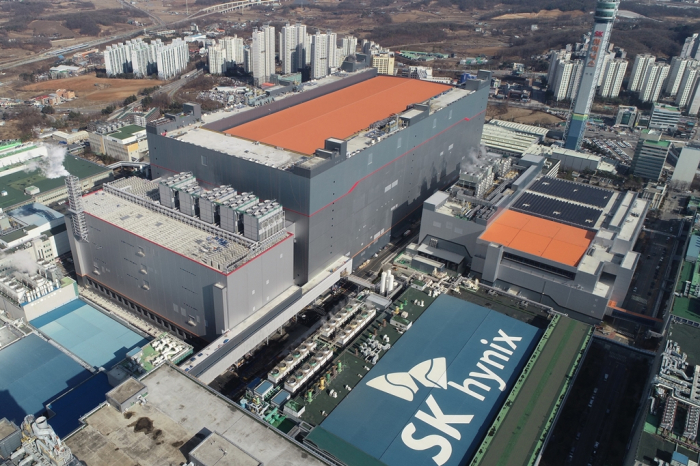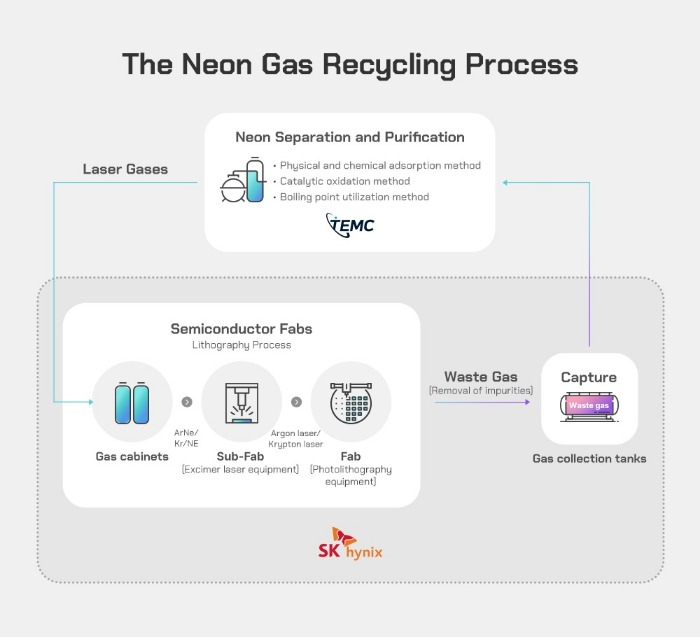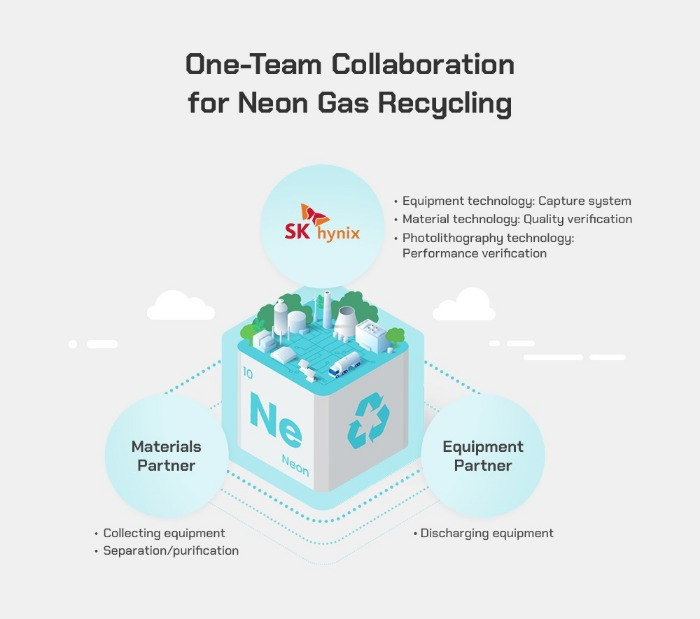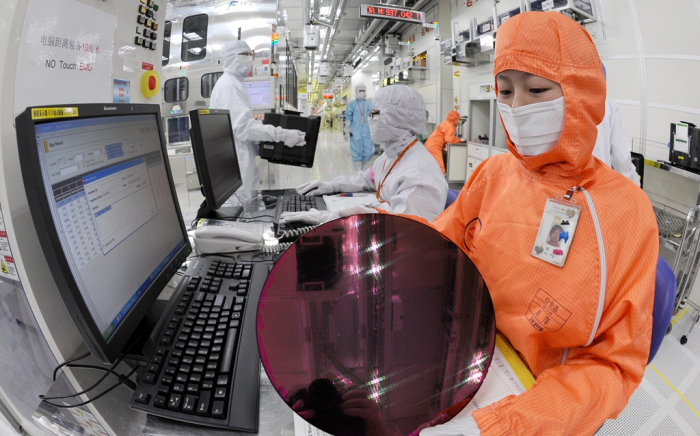Korean chipmakers
SK Hynix, TEMC develop industry’s first neon gas recycling technology
The chipmaker expects the tech to save $30 million annually by reducing its reliance on neon gas imports
By Apr 01, 2024 (Gmt+09:00)
3
Min read
Most Read
LG Chem to sell water filter business to Glenwood PE for $692 million


KT&G eyes overseas M&A after rejecting activist fund's offer


Kyobo Life poised to buy Japan’s SBI Group-owned savings bank


StockX in merger talks with Naver’s online reseller Kream


Meritz backs half of ex-manager’s $210 mn hedge fund



SK Hynix Inc., the world’s second-largest memory chipmaker after Samsung Electronics Co., and its South Korean partner TEMC Co., have jointly developed neon gas recycling technology – the industry’s first to do so.
When applied to its chip fabrication lines, SK Hynix expects to save as much as 40 billion won ($30 million) annually by reducing its reliance on imports for neon gases used in chip manufacturing, the company said on Monday.
Most Korean chipmakers, including SK Hynix and its crosstown rival Samsung, and microelectronic device makers rely on imports for their neon gas needs.
SK Hynix said it and TEMC, a specialty gas producer, have worked for over a year to develop the neon gas recycling technology.
Neon is required for excimer lasers or ultraviolet lasers that are used in a chip production process known as lithography, where machines carve patterns onto tiny pieces of silicon made by the likes of Samsung, Taiwan Semiconductor Manufacturing Co. (TSMC), Intel Corp. and SK Hynix.

PROTRACTED RUSSIA-UKRAINE WAR
As a buffer gas in krypton and argon lasers used in lithography that underpins chipmaking, neon is used in large quantities.
The protracted Russia-Ukraine war, which broke out in 2022, has caused the production of neon gas to fall to worryingly low levels, pushing its prices higher.
Ukraine dominates global production of the essential semiconductor process gas as more than half of the world’s neon is produced by a handful of companies in the country.
Korean chipmakers have mainly sourced neon gas from Ukraine, Russia and China.
Last month, Samsung said it plans to use recycled neon gas from next year to reduce its dependence on imports and slash its carbon footprint during chip production.

NEON RECYCLING TECH
Chipmakers currently release neon gas into the air after use in the lithography process.
However, SK Hynix and TEMC collect discharged neon gas through a scrubber, a device that filters and removes waste gases generated during the semiconductor production process, in a collection tank, and then extract purified neon gas through TEMC’s gas treatment process for reuse.
SK Hynix said its neon recovery rate is currently at 72.7% and plans to soon raise the rate to 77%.
The chipmaker said through its neon gas recycling technology it expects to cut greenhouse gas (GHG) emissions, particularly Scope 3 emissions, by 12,000 metric tons of carbon dioxide equivalent per year (tCO2e/yr).
GHG emissions are categorized as Scope 1, direct emissions, Scope 2, indirect emissions and Scope 3, other indirect emissions.

Scope 3 includes all emissions that are not produced by a company but as a consequence of the entire industry value chain from raw materials sourcing to product manufacturing.
In February, SK Hynix unveiled a roadmap for its use of recycled materials in chip production.
Under the plan, the company aims to hike the use of recycled materials in its chip products to 25% by 2025 and raise the ratio to 30% by 2030.
The development of the neon gas recycling technology will play a key role in achieving that goal, it said.
The company also plans to develop recycling technologies for other gases used in chip manufacturing such as deuterium, hydrogen and helium, as well as chemicals such as sulfuric acid by 2025.
“Through such efforts, we hope to contribute to the global initiative to reduce carbon emissions and raise our chip-making competitiveness. We’ll also strengthen cooperation with our partners in that regard,” said an SK Hynix official.
Write to Jeong-Soo Hwang at hjs@hankyung.com
In-Soo Nam edited this article.
More to Read
-
 Korean chipmakersSamsung to use recycled neon gas in chip manufacturing
Korean chipmakersSamsung to use recycled neon gas in chip manufacturingMar 07, 2024 (Gmt+09:00)
2 Min read -
 Korean chipmakersSK Hynix bets on DRAM upturn with $7.6 bn spending; HBM in focus
Korean chipmakersSK Hynix bets on DRAM upturn with $7.6 bn spending; HBM in focusNov 09, 2023 (Gmt+09:00)
4 Min read -
 Korean chipmakersSK Hynix showcases cutting-edge CXL, AiM memory at OCP Summit
Korean chipmakersSK Hynix showcases cutting-edge CXL, AiM memory at OCP SummitOct 20, 2023 (Gmt+09:00)
2 Min read -
 Korean chipmakersSK Hynix pins high hopes on specialty DRAM for AI use: CEO
Korean chipmakersSK Hynix pins high hopes on specialty DRAM for AI use: CEOOct 10, 2023 (Gmt+09:00)
3 Min read -
 Korean chipmakersSK Hynix hikes use of locally produced neon gas for chip manufacture
Korean chipmakersSK Hynix hikes use of locally produced neon gas for chip manufactureOct 05, 2022 (Gmt+09:00)
1 Min read
Comment 0
LOG IN


